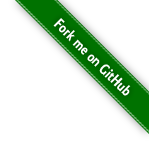#326 catsay GUI
Building the GUI catsay example from Practical Rust Projects, learning about making graphical interface programs with Rust.
Notes
The graphical interface catsay example from Practical Rust Projects is used to demonstrate techniques for making GUI programs with Rust.
The book uses the gtk-rs crate - a popular and mature framework for rust. The gtk3 version is used for the book examples, but I’m following the same pattern but with the succeeding gtk4 project.
Building catsay
Start a new project:
$ cargo new --bin catsay
Creating binary (application) `catsay` package
note: see more `Cargo.toml` keys and their definitions at https://doc.rust-lang.org/cargo/reference/manifest.html
$ cd catsay/
$ cargo run
Compiling catsay v0.1.0 (/Users/paulgallagher/MyGithub/tardate/LittleCodingKata/rust/catsay-gui/catsay)
Finished `dev` profile [unoptimized + debuginfo] target(s) in 0.53s
Running `target/debug/catsay`
Hello, world!
Step 1: setup the app framework with GTK4
Add the GTK4 dependency with cargo add gtk4
The example uses the gtk4 crate.
I’m using macOS, so first install GTK4 with homebrew:
brew install gtk4.
Update the code to show a window:
use gtk4 as gtk;
use gtk::prelude::*;
use gtk::{glib, Application, ApplicationWindow};
fn main() -> glib::ExitCode {
let app = Application::builder()
.application_id("org.example.HelloWorld")
.build();
app.connect_activate(|app| {
// We create the main window.
let window = ApplicationWindow::builder()
.application(app)
.default_width(320)
.default_height(200)
.title("Hello, World!")
.build();
// Show the window.
window.present();
});
app.run()
}
Starting with cargo run:

Step 2: Add Text and Image
Use cargo add gdk-pixbuf to add Rust bindings for the GdkPixbuf library.
Use a Box to constrain the layout
...
// Create a vertical box layout.
let vbox = Box::new(gtk::Orientation::Vertical, 0);
// Add a message label
let label = Label::new(Some("Meow!"));
vbox.append(&label);
// Load the image from the file and display it in the window.
if let Ok(pixbuf) = gdk_pixbuf::Pixbuf::from_file("./images/cat.png") {
let image = Image::from_pixbuf(Some(&pixbuf));
image.set_size_request(pixbuf.width(), pixbuf.height());
vbox.append(&image);
} else {
eprintln!("Failed to load image: ./images/cat.png");
}
...

Step 3: Use Glade to Design the Layout
I’m using macOS, so first install glade with homebrew:
brew install glade.
Build the layout.gtk3.glade with glade:

Now apparently glade has not/will not be updated for gtk4. It produces layout for gtk3 only.
A conversion utility can be used to convert the layout
$ gtk4-builder-tool simplify --3to4 layout.gtk3.glade > layout.glade
layout.gtk3.glade:22: Property GtkBox::resize-mode not found
layout.gtk3.glade:58: Property GtkCenterBox::homogeneous not found
It doesn’t fix the “not found” warnings however. I needed to manually remove them from layout.glade.
Update the code accordingly:
use gtk4 as gtk;
use gtk::prelude::*;
use gtk::Application;
fn build_ui(app: >k::Application) {
let glade_src = include_str!("../layout.glade");
let builder = gtk::Builder::from_string(glade_src);
let window: gtk::Window = builder.object("applicationwindow1").unwrap();
window.set_application(Some(app));
// Inputs
let message_input: gtk::Entry = builder.object("message_input").unwrap();
let is_dead_switch: gtk::Switch = builder.object("is_dead_switch").unwrap();
// Submit button
let button: gtk::Button = builder.object("generate_btn").unwrap();
// Outputs
let message_output: gtk::Label = builder.object("message_output").unwrap();
let image_output: gtk::Image = builder.object("image_output").unwrap();
let image_output_clone = image_output.clone();
button.connect_clicked(move |_| {
message_output.set_text(&format!(
"{}\n \\\n \\",
message_input.text().as_str()
));
let is_dead = is_dead_switch.is_active();
if is_dead {
image_output_clone.set_from_file(Some("./images/cat_dead.png"))
} else {
image_output_clone.set_from_file(Some("./images/cat.png"))
}
image_output_clone.set_size_request(200, 289);
image_output_clone.show();
});
window.present();
image_output.hide();
}
fn main() {
let application = Application::builder()
.application_id("lck.gui.catsay")
.build();
application.connect_activate(|app| {
build_ui(app);
});
application.run();
}
Then it runs cargo run:


